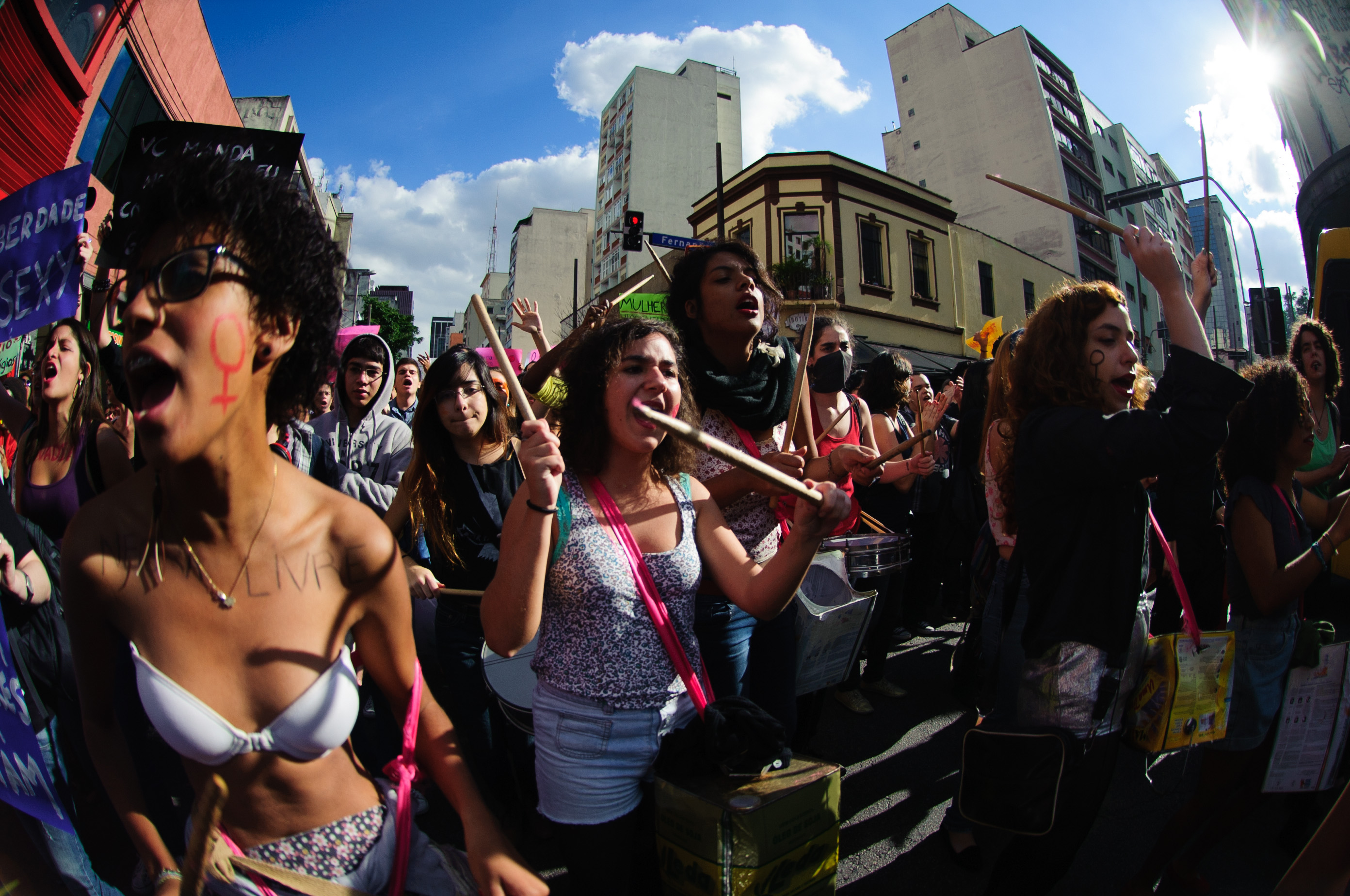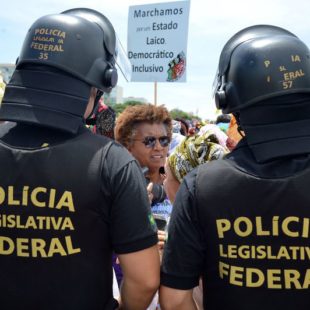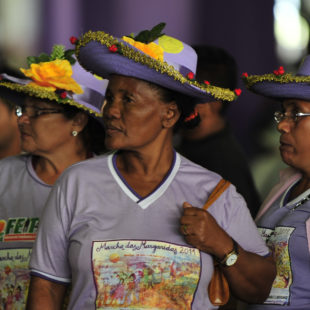22/02/2017 15:31
Another International Women’s Day is upon us. Long at the center of the struggle for gender equality, the date mobilizes women in Brazil and worldwide, as they fight for specific demands in different situations. Women’s movements have raised their voices and achieved deep changes in their territories. Black, indigenous, peasant, fisher, riverside and trans women, along with union activists, prostitutes, students, domestics, researchers, lesbians, recyclable material gatherers, teachers and others have organized against the violation of rights and to put an end to inequalities and oppression.

Sluts March, 2013. (Photo: Marcelo Camargo/ABr)
During the recent impeachment trial of Dilma Rousseff we witnessed countless expressions of misogyny.[1] We then saw the return of “first ladyism,” totally congruent with the drive to keep women in subordinate positions. With the coup, important areas for the universalization of social rights have been attacked harder than ever. As part of this process, long-standing conservative movements have become more explicit. Fascist positions are voiced by new players to promote the “traditional Brazilian family” and fight transformations defended by feminists.
In schools, a priority on merely technical, market-oriented schooling, already a trend before the coup, is becoming more widespread. The “Non-Partisan School” and the “Middle School Reform” movements are examples of this, as they try to exclude any study of gender and reinforce the false notion of “political, ideological and religious neutrality.” It is getting harder all the time to implement non-sexist, anti-racist, non-LGBT-phobic and lay education.
In terms of health, women still suffer violence during childbirth, especially when they are poor and black. Black women, for example, are the primary victims of cycle-cell anemia. Indigenous women are massacred by the lack of public policies that recognize their knowledge about medicinal plants and natural medicine, while herbal healers, midwives and other folk healers are criminalized. The spread of cases of depression adds to a burden already carried by women working double or even triple days. Both the state and private companies impose rules on women’s bodies, restricting their sexual and reproductive rights.

Black Women’s March, 2015. (Photo: Antônio Cruz/ABr)
Another key issue to be dealt with is femicide.[2] According to the “2015 Map of Violence: Women Homicide Victims,”[3] 13 women are murdered every day in Brazil, 50% of them by relatives or people close to them. From 2003 to 2013, the number of homicides grew by 21%, although it fell by 10% among white women. The number actually rose 54% in cases involving black women. The culture of rape must also be confronted immediately. The 2014 Brazilian Public Safety Yearbook reports that a woman is raped in Brazil every 11 minutes. Collective and “corrective” rapes have become more common, the latter against lesbians, due to prejudice. The struggle to stop violence against women must consider their different realities and interlink with aspects involving racism, class and sexual orientation.
Ever since the so-called Maria da Penha Act was signed into law in 2006, to fight violence against women, women have struggled to have it enforced. In today’s context of attacks on rights, that Act runs the risk of being amended to make it weaker, not stronger. The word “victim,” for example, may be inserted to replace the term “women in a situation of violence.” It may also grant local police the authority to impose or deny protective measures for women in threatening situations.
Data published by the federal Brazilian Geography and Statistics Institute (IBGE)[4] have shown that the quest for economic autonomy is still a banner. Despite having more schooling, working women earn nearly 30% less than men. Over the past decade, more of them started working outside their homes, but the men have not taken on domestic chores. Current proposals to amend Brazil’s labor laws may make their lives even more difficult. When companies turn to layoffs, women are generally the first to go.

March of the Margaridas (Peasant Women), 2011. (Photo: Marcello Casal Jr/ABr)
Despite all this regression, we cannot back down on feminist causes. Fortunately, we can see several expressions of feminism, both rhetorical and practical. Women protested trying to stop the coup in Brazil. We also recall mobilizations that began in Argentina, with the slogan “¡Ni una a menos!” (Not one women less), as well as in the US around the election of Donald Trump, who spreads hate in his speeches and decisions. Another example is the International Women’s Strike, a global movement first launched by women in Germany, Argentina, Chile, South Korea, Ecuador, Scotland, Northern Ireland, Ireland, Israel, Italy, Mexico, Peru, Poland, Russia, El Salvador, Sweden and Turkey. The initiative has spread to many other countries such as Brazil, where women are also striking on March 8. Many other events put the focus on social-security reforms that will be especially hard on rural women, who may lose benefits defined by specific rural labor conditions. All these and other diverse women’s movements and collectives are putting their agenda on the streets.
Women are also denouncing cases of social and environmental injustice. In rural areas, even breastmilk is contaminated by pesticides. In the cities, women are the foremost victims of evictions by real estate speculators. In the forests, large-scale development projects not only bring environmental impacts but also cause mass migrations by workers, provoking high rates of violence against women. As in past years, FASE is present in these struggles. We commemorate the feminists’ legal, cultural and political achievements, but those causes are not a thing of the past. There are many forms of chauvinism that make society what it is. Once again, we show how they are being confronted everyplace, wherever all kinds of women stand up to fight.
[1] Aversion, repulsion and hatred of women.
[2] Gender-motivated crime.
[3] A study published by UN Women, the Pan-American Health Organization (PAHO/WHO) and the Special Secretariat for Women’s Policies (SPM).
[4] “Gender Statistics” based on Brazil’s official 2010 Census.










